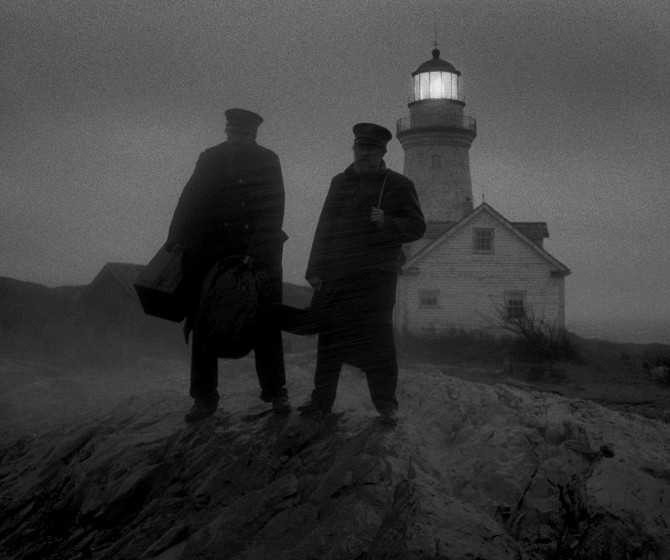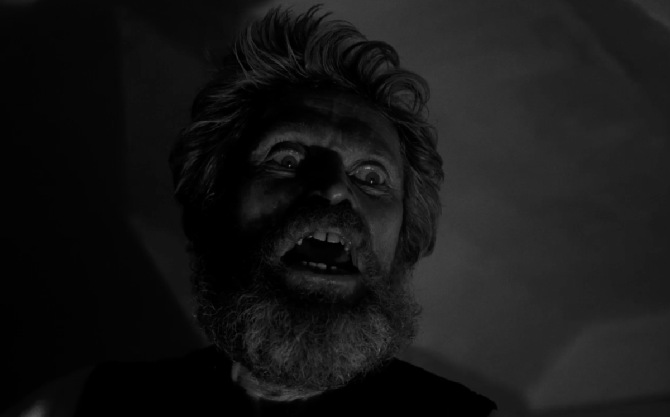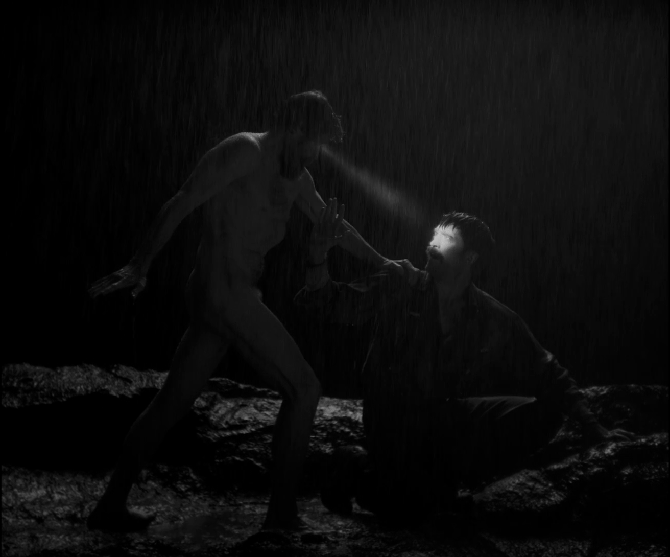You could quite easily argue that Robert Eggers has created a new sub-genre of horror. His first film, 2015’s The VVitch, developed an historically accurate look at seventeenth century America – from the puritanical Calvinist family and authentic-to-the-time language, to painstakingly recreating the period’s buildings, clothing, fences, and, more impressively, cinematography. Built around real fears of the time, the horror comes from what would have gone through the minds of these people in this early America.
Eggers follows this up with 2019’s The Lighthouse, a nineteenth century-set yarn about two lighthouse keepers stranded on an isle. Forced to build a lighthouse from scratch in Nova Scotia, Canada, the filmmaker also made the bold decision to etch this almost alien world in eerie black and white, furthering the claustrophobia and atmosphere by utilizing 35 mm black and white film, vintage Baltar lenses from the early twentieth century, and a 1.19:1 aspect ratio – meaning that instead of the widescreen we are used to, the picture is basically a square portal into this world. And, like The VVitch, look for intricately made set design, sound, costumes, cinematography and dialogue (expect to hear the word ‘wickie’ quite often – meaning lighthouse keeper, it is a reference to the wick trimming performed on the job).
Following two men who will spend a month managing the island set lighthouse, Thomas Wake (Willem Dafoe) is the aging leader of the pair. . . a long working lighthouse keeper with a gimp, wild hair and beard that would make Ahab proud, and a diction that seems to have come right off the sea. His minion is first timer Ephraim Winslow (Robert Pattinson – in many ways the eyes that we follow in this story), a much younger man with a more traditional speech pattern and a big bushy mustache. As those thirty days come towards a close, a raging storm arises – forcing the men to hunker down as they wait for the ship’s delayed return.
A fantastic mood piece (that builds scene after scene until it reaches its epic crescendo), this is really all you need to know specifically about the plot. As the pair settle onto this sparse island, things just seem a bit off. And, much like the characters, our eyes seem to deceive us. Eggers, along with talented cinematographer Jarin Blaschke, teases us with mesmerizing visuals. . . a face in the water of the cistern, a dreamlike vision of light and dark in the ocean’s waves, something found in a lobster trap, entrancing transitions that change time and space, and an overall distortion of reality – much like the characters, who struggle with their present circumstances.
Pulling from the tales of the sea and the Greek classics, do seagulls hold the souls of dead seamen? Can two men be cursed by these folkloric stories? What role do mermaids and krakens play in this story of keeping your sanity in a secluded place? Can one be doomed to a Promethean fate? Does this mean that the light coming from the house represents the fire Prometheus looks to steal? If we look at Winslow as the possible stand in for the above mythical figure (for he is definitely a trickster), who is the old, strong willed and controlling Wake?
A story of black, white and many shades of grey, Blaschke lights the film with harsh lighting utilized during the silent and Golden Age of cinema. . . making for dramatic elements that befit this very classically derived narrative. Shadows make people look threateningly large, ominously mad, or sinisterly deranged, while the pure dark night in a world where most of the light comes from a powerful lighthouse makes for a stunning, dynamic and awe-inspiring landscape. Also look for an ode to Sascha Schneider’s work of art ‘Hypnose’ – found in one of the dream sequences.
Also look for long takes, for the opening finds a visual gag as Winslow investigates the tiny dual bedroom – both hitting his head and being hit by some flatulence by an unseen Wake, while a noticeable monologue (a work of art by Dafoe – who doesn’t blink for two straight minutes) finds Wake cursing his partner. . . who does not like his lobster.
Yet, it is not only the visuals that matter. Encompassing fabulous use of sound, a foghorn is heard on and off throughout, while the pounding of the elements and other fantastical sounds make for a unique experience for the ears. And lest we forget the score from Mark Korven, a stunning composition that is perfectly in tune with every step this film takes, whether literally or figuratively.
With co-writer/director Robert Eggers describing The Lighthouse as a “nothing good can happen when two men are trapped alone in a giant phallus” story, there is also a cosmic sense of humour (or irony) in this often dark tale. It is fantasy, drama, horror and living history. . . could this new sub-genre perhaps be named historical horror?
A truly unique experience, The Lighthouse is silent horror, both Shakespearian and Greek tragedy, mood piece, historical drama and visual masterpiece. Centred on two spirited and intense performances by Pattinson and Dafoe, they live these characters. . . the camera picking up every crag in their face, every look of despair or desire, every nuance in their expression, and every tone in their voice – simply, in other hands, this wouldn’t be the same film. . . and the same could be said for Eggers dynamic visionary style (paired with DOP Blaschke’s Oscar nominated efforts). So, fearrr not what ye’ll find in thee light, take a bird’s eye view to yere own delight.




